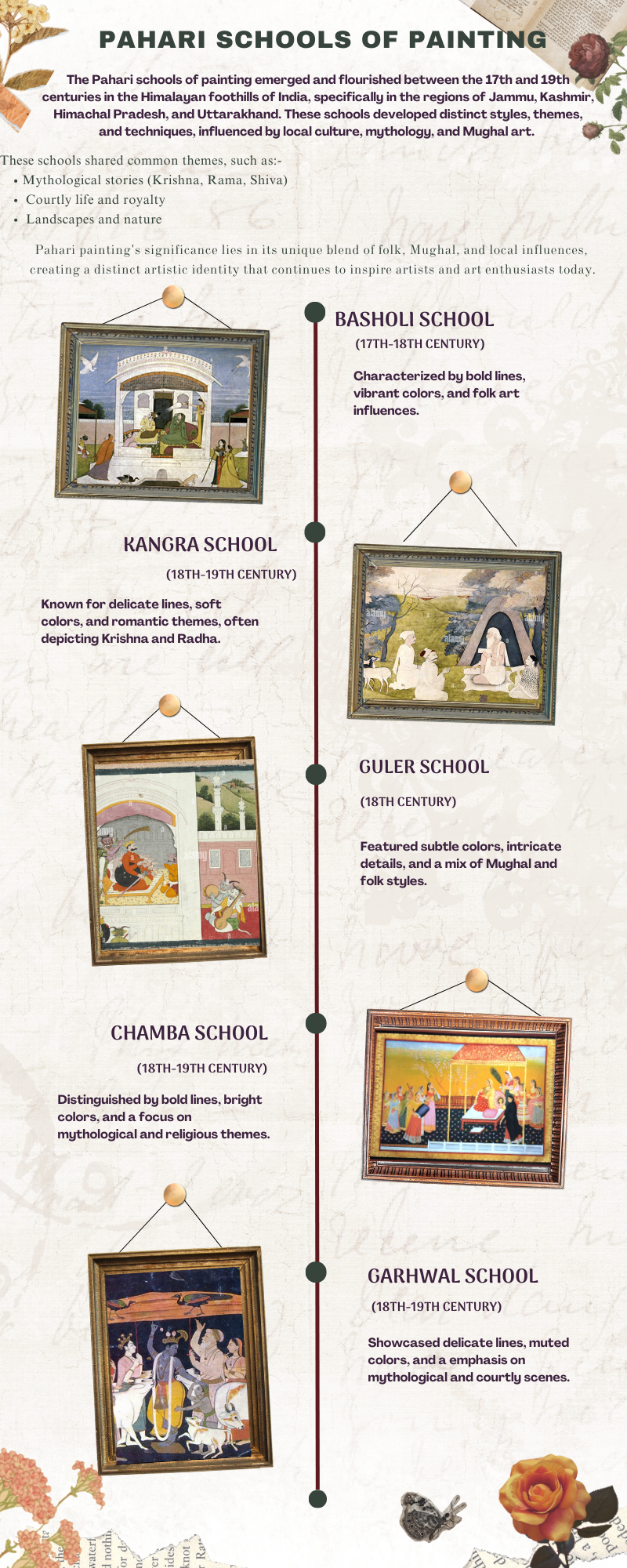Examine the impact that miniature paintings have had on Indian art. Which themes and literary devices, especially from the Mughal era, are common in this genre?
Madhubani painting, with its origins in the Mithila region of Bihar, holds significant importance in contemporary Indian art. It not only showcases rich artistic traditions but also serves as a medium for expressing social issues and cultural narratives. Here are some key points discussing its signiRead more
Madhubani painting, with its origins in the Mithila region of Bihar, holds significant importance in contemporary Indian art. It not only showcases rich artistic traditions but also serves as a medium for expressing social issues and cultural narratives. Here are some key points discussing its significance:
1. Cultural Heritage and Identity
Madhubani painting is a vital aspect of Indian folk art, representing the cultural heritage of the Mithila region. Its revival in contemporary art has helped preserve traditional techniques and motifs, fostering a sense of identity and pride among local communities.
2. Themes Reflecting Social Issues
Madhubani paintings often depict themes that resonate with contemporary social issues, including:
- Gender Roles: Many artists explore the roles of women in society, portraying them as strong figures. This challenges traditional gender stereotypes and highlights women’s empowerment.
- Environmental Concerns: Recent works address ecological issues, emphasizing the connection between nature and human life. Artists depict flora and fauna, raising awareness about environmental conservation.
- Social Justice: The art often critiques social inequalities, including caste and class issues. Through visual storytelling, Madhubani artists address these pressing societal concerns.
3. Cultural Narratives and Mythology
Madhubani paintings are rich in mythological and folk narratives, depicting stories from Hindu epics like the Ramayana and Mahabharata. These narratives serve as a bridge connecting traditional beliefs with contemporary values, reflecting the ongoing relevance of these stories in modern society.
4. Innovative Techniques and Modern Adaptations
Contemporary artists have adapted traditional Madhubani techniques to explore new themes and styles. This innovation has broadened the appeal of Madhubani painting, making it relevant to contemporary audiences while retaining its traditional roots. Artists are experimenting with mixed media, digital formats, and large-scale installations.
5. Empowerment through Art
The resurgence of Madhubani painting has empowered local artisans, especially women, by providing them with a platform for economic independence. Workshops and art initiatives encourage skill development and promote their work in national and international markets, enhancing their livelihoods.
6. Crossover into Mainstream Art
Madhubani painting has gained recognition in the contemporary art scene, with exhibitions and collaborations featuring its artists. This crossover has elevated the status of folk art, integrating it into the broader narrative of Indian art and culture.
7. Global Influence
The unique aesthetic of Madhubani painting has attracted international interest, leading to collaborations with global artists and inclusion in global art forums. This exposure not only promotes Indian culture abroad but also fosters cross-cultural dialogues.
Conclusion
In summary, Madhubani painting is significant in contemporary Indian art as it reflects social issues, cultural narratives, and the resilience of tradition. By addressing gender roles, environmental concerns, and social justice, it remains relevant in modern discourse while celebrating its rich heritage. As artists continue to innovate and adapt, Madhubani painting serves as a dynamic medium for cultural expression and social commentary in contemporary India.
See less


Miniature paintings have had a profound influence on Indian art, particularly during the Mughal era, where they reached new heights in terms of detail, themes, and techniques. Here’s an analysis of their impact and the prevalent themes and techniques in this genre: Influence on Indian Art Cultural SRead more
Miniature paintings have had a profound influence on Indian art, particularly during the Mughal era, where they reached new heights in terms of detail, themes, and techniques. Here’s an analysis of their impact and the prevalent themes and techniques in this genre:
Influence on Indian Art
Themes in Mughal Miniature Paintings
Techniques in Mughal Miniature Paintings
Conclusion
In conclusion, miniature paintings, particularly during the Mughal era, significantly influenced Indian art through their cultural synthesis, documentation of history, and elevation of artistic techniques. The themes explored—ranging from court life and mythology to nature and romance—along with the meticulous techniques employed, contributed to a rich artistic tradition that remains influential in contemporary Indian art. The legacy of Mughal miniatures continues to inspire artists, historians, and enthusiasts alike, reflecting the enduring beauty and complexity of this genre.
See less